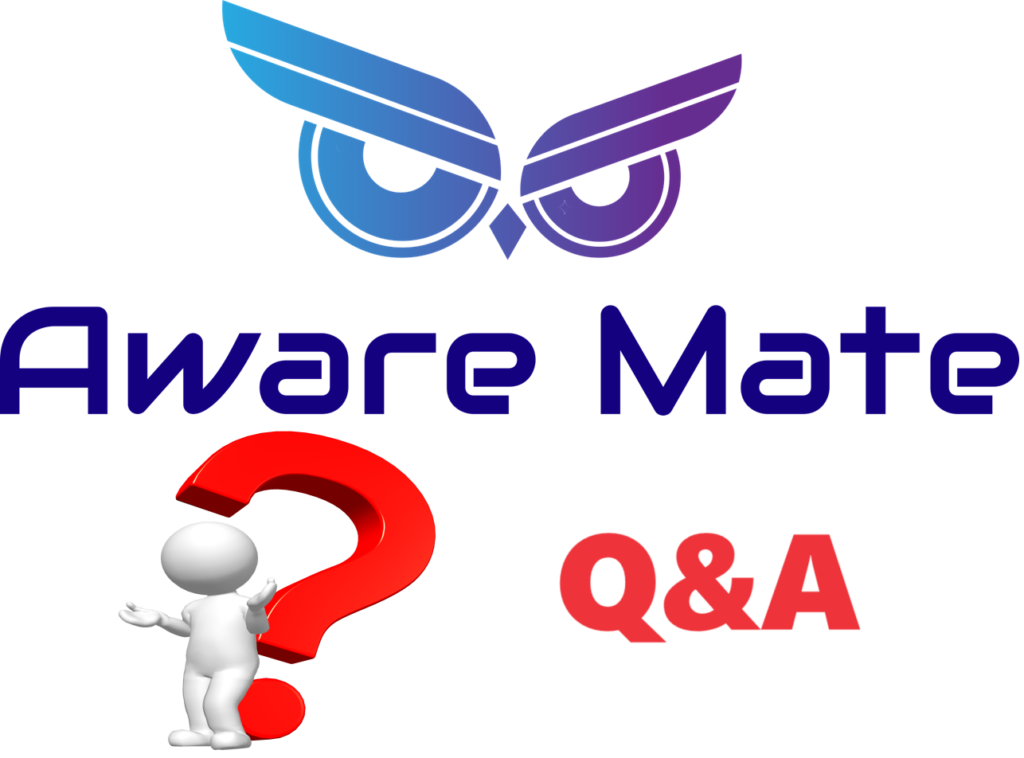
Aware Mate is an AI‑assisted fatigue and distraction decision‑support tool for bridge watchkeeping. It uses video analytics to derive indicators of reduced vigilance and presents advisory cues to help the bridge team maintain safe attention. Officers always remain in full control; Aware Mate is an aid, not an autonomous system.
BNWAS is a presence/response alarm with periodic prompts. Aware Mate is state‑aware: it looks for sustained indicators of reduced alertness using video analytics and provides advisory cues. It is not a BNWAS and does not replace BNWAS carriage or testing; it is designed to work alongside existing bridge alerting according to ship policy and class requirements.
They address different channels.
- Aware Mate: video analytics for watchkeeper vigilance on the bridge.
- Helm Order Monitor: audio analytics focused on order–readback–action discipline at the helm.
They are complementary and can be deployed independently.
Unlike the current Bridge Navigational Watch Alarm System (BNWAS), which has several limitations, Aware Mate offers a proactive approach to detecting both fatigue and distraction. It eliminates reliance on manual reset actions by providing continuous, real-time monitoring of behavioral and physiological signs. This direct monitoring approach enables early identification of reduced alertness or attention lapses, significantly enhancing maritime safety.
No. It does not provide medical diagnoses. It infers risk from observable, non‑identifying visual cues over a short, configurable interval and raises an advisory when sustained indicators exceed adaptive limits.
Processing is edge‑based by default on a dedicated unit; the system operates without an internet connection. Updates and remote support are optional and policy‑controlled.
The system uses video for real‑time analytics. Data‑minimisation is the default, and retention settings are configurable to operator policy (for example, storing only event summaries if required by the Safety Management System). Aware Mate does not perform face recognition or identity matching.
No. Aware Mate uses video analytics only. (Audio analytics are part of the separate Helm Order Monitor product line.)
Aware Mate uses concise, plain‑language advisory cues and harmonises with bridge alert conventions. Visual status and escalation behaviour are designed to align with IMO MSC.191(79) (e.g., red reserved for alarms, yellow for warnings; flashing reserved for unacknowledged alarms) and to be consistent across displays.
Yes—UI design follows the principles in IEC 62288 (presentation of navigation‑related information) and MSC.191 for colour coding, integrity marking, and alert status handling. Alignment with these principles helps crews recognise states consistently across bridge systems.
Where permitted, Aware Mate can interface with shipboard alerting according to policy and class requirements and is designed to fit cleanly within Bridge Alert Management concepts (MSC.302). Implementation details depend on the vessel’s architecture and approvals.
A marine‑rated IP camera positioned to view the watchkeeper, a compact edge compute unit, and a display area for advisory cues. Components are selected for low‑light and high‑noise bridge conditions; exact specifications and placement are determined during ship survey and installation to meet owner/class requirements.
Installations are planned to respect bridge ergonomics and HMI principles commonly referenced by class (e.g., readability, reach, consistent controls) and by owner standards. Where an interface to existing alerting or INS is proposed, the shipyard/owner may seek class/flag review as usual.
No. It is decision‑support equipment that complements existing watchkeeping practices and regulated systems (e.g., BNWAS, radar, ECDIS). It does not remove the obligation for a proper lookout or required alarms.
The system is designed for real‑time use in typical bridge conditions; performance depends on installation quality, lighting, occlusions, and operating conditions. Commissioning includes calibration, crew familiarisation, and acceptance tests defined with the owner.
Aware Mate uses context‑aware timing windows and consistency checks to highlight meaningful, sustained indicators without nuisance. Sensitivity can be tuned within owner policy during commissioning.
By default, processing is on‑device, with data‑minimisation and retention settings governed by the operator’s policy and applicable data‑protection rules. Role‑based access and audit practices follow the company’s SMS and IT governance.
Yes. The advisory logic is robust to varied lighting and bridge environments and can be tuned for different watchkeeping practices across maritime and inland operations.
Independent investigations (e.g., MAIB Bridge Watchkeeping Safety Study), the International Transport Workers’ Federation’s work on seafarer fatigue, and academic programmes such as the Cardiff research on seafarer fatigue highlight how fatigue and distraction degrade watchkeeping and safety. The system is built to help crews act earlier on such risks.
The product is designed to assist, not police. Its goal is to surface early, trend‑level risk for the master and DPA—supporting rest/work management and training—without becoming a surveillance burden. Deployment and data handling are documented in a clear SOP alongside the company’s SMS.
Yes. We support controlled pilots with success criteria defined jointly with the owner (safety improvement objectives, crew feedback, integration scope) before any broader deployment.
Aware Mate is a decision‑support tool. It does not replace mandatory equipment, the officer of the watch, or COLREG obligations. UI and alerting are designed to align with maritime HMI/alert principles (IEC 62288, MSC.191) and to fit within Bridge Alert Management concepts (MSC.302), with installation and interfacing carried out in accordance with shipowner policy and class/flag requirements.